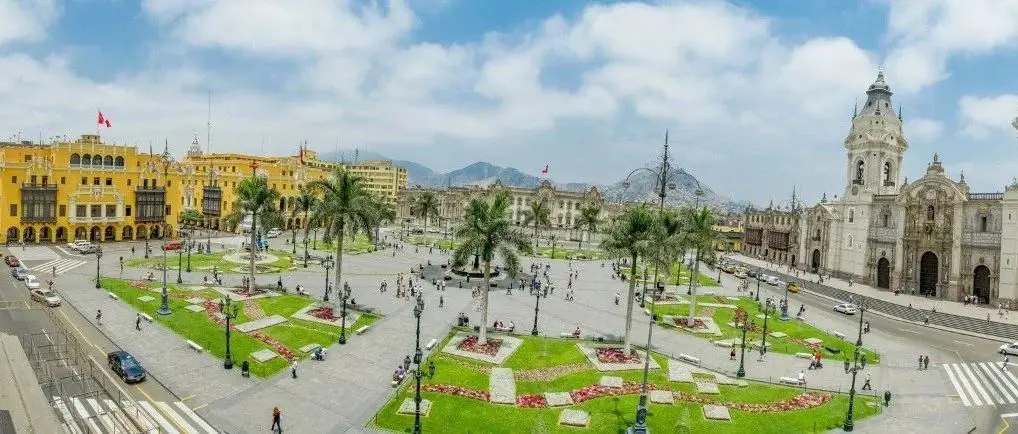Step into Peru, the Investment Blue Ocean You May Not Know | Focus on High-Level Visits

At the invitation of President Dina Boluarte of the Republic of Peru, President Xi Jinping attended the 31st Asia-Pacific Economic Cooperation (APEC) Economic Leaders' Meeting in Lima from [specific dates] and paid a state visit to Peru. Peru is a country with a relatively developed free market economy in Latin America, with relatively sound laws and regulations, and standardized and transparent policies and systems. Foreign exchange management is lenient, allowing for free inflow and outflow of foreign investment and profits, subject only to compliance with procedures related to "anti-corruption" and "anti-money laundering." In recent years, water conservancy and electricity, as well to transportation infrastructure, have gradually become new hotspots for Chinese enterprises to invest and cooperate in Peru.
Economic Overview
For a long time, Peru has been an important regional economic power in South America, with relatively low market risks, and its risk index is only higher than that of Chile. The country's macroeconomic indicators are performing well, with sufficient foreign exchange reserves, a relatively low proportion of external debt, and a stable local currency exchange rate against the US dollar. Overall, Peru's economy still has considerable development potential.
Peru's economy remains centered around mining, agriculture, and fishing. The digital and green economies in Peru are relatively new and underdeveloped, but they have seen some growth during the COVID-19 pandemic, with gradual expansion in their layout. However, influenced by the neoliberal economic system, Peru has not yet implemented "preferential policies" specifically for the digital and green economies, in order to ensure "fair competition." Government support measures are mostly focused on training, facilitation, promotion, and publicity.
During the COVID-19 pandemic, Peru's economy suffered a heavy blow, with its Gross Domestic Product (GDP) dropping to its lowest level in years. In 2021, Peru gradually relaxed its pandemic control measures and implemented various measures to stimulate economic growth, resulting in a year-on-year increase of %. In 2022, Peru's economic growth slowed, with a year-on-year increase of only %. From 2023 to October, Peru's economic growth rate shrank month by month, with an expected negative growth for October. Professional institutions predict that Peru's economy will not recover to pre-pandemic levels until 2024.
China-Peru cooperation is close. China has been the largest trading partner and largest export market of Peru for nine consecutive years. The total trade volume between China and Peru accounts for one-third of Peru's total foreign trade, and Peru has always enjoyed a surplus. Peru is also China's second-largest investment destination in Latin America, second only to Brazil.
Investment Attraction
Since the mid-20th century, Peru has gradually stabilized its social order, laying the foundation for economic development. The Peruvian government has actively promoted the privatization of state-owned enterprises, expanded market openness, vigorously attracted foreign investment to develop energy and mineral resources and build infrastructure, improved efficiency, and continuously enhanced the investment environment. At the same time, seizing the opportunity of rising international prices for raw materials, it has fully leveraged its industrial advantages, significantly developed foreign trade, actively promoted product exports and market diversification, and proactively lowered import tariffs, resulting in a healthy growth trend for the national economy.
Overall, in recent years, Peru has consistently ranked among countries with relatively low regional investment risk indices. The appeal of Peru to foreign investment is primarily manifested in: abundant resources in mining, energy, forestry, agriculture, hydropower, and marine sectors, with broad development prospects; advantageous geographical location, relatively convenient transportation conditions by sea, land, and air; relatively stable political situation, low political risk; stable fiscal policies, relatively sound tax laws, and transparent policies; loose foreign exchange management, relatively free movement of foreign investment capital and profits in and out of Peru; and good macroeconomic performance, with strong market growth potential.
The Peruvian government continues to focus on enhancing digital management and service levels, enacting regulations for digital government management, and initially establishing a digital management system and online service processes. Currently, citizens can access government services through various forms such as digital service centers, online platforms, and applications. The Ministry of Production in Peru has implemented the "Peru Innovates" plan, offering enterprises innovation training, technology supplier selection, and preferential financing to support their innovative development. Additionally, efforts are being made to promote collaboration between businesses, particularly between traditional enterprises and high-tech companies, to collectively boost productivity.

